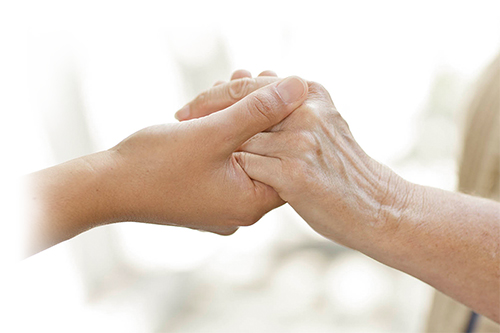Spring Arbor, MI
In our age of austerity and cost-cutting, the two industries currently under the microscope are healthcare and education. The gains in productivity that have transformed other parts of our economy—agriculture, manufacturing, construction—seem to have bypassed these two. According to one graph, over the past thirty years college tuition and fees have increased 439%, medical costs have increased 251%, and yet the broader Consumer Price Index has increased only 106%.
Many assume the rising costs of education and healthcare are caused by their resistance to the industrial technologies of efficiency. Whereas one factory worker can rely on more sophisticated machines to be more productive than a factory worker 20 years ago, and one farmer can rely on bigger tractors and better chemicals to produce more calories than a farmer 20 years ago, patients and students still want individual attention from doctors and teachers. Thus a classroom today, where one professor teaches fifteen or twenty students, doesn’t look much different than a classroom one hundred years ago.
Given this diagnosis of the problem—rising costs are due to a lack of technological innovation in the fields of healthcare and education—these industries are increasingly turning to technological solutions. Thus my opening metaphor: the microscope will provide the focused perspective needed to identify the problems and find the solutions. In both fields, then, new technologies promise to reduce costs and personalize care. In education, industrial methods influence everything from the design of classrooms, the shift toward online courses and MOOCs, and the attempt to move almost the entire institution online. In medicine, they underlie the growth of electronic health records (which gained recent notoriety when they led to an Ebola patient being erroneously sent home from a Dallas hospital), and the development of computers that can make diagnoses and smartphone apps that monitor vital signs and provide urinalysis. In other words, new technology promises to personalize care or teaching, but it claims to be able to do this without the need for personal relationships.
What if this is the wrong diagnosis, however, and these institutions are caught in the vicious cycle of using industrial solutions to solve the problems caused by industrial technology? Perhaps calling hospitals and universities “industries” begs the question of their proper organization and leads to the misapplication of industrial techniques. Wendell Berry (you knew I was going to mention him sooner or later) takes this line of criticism in his important essay “Solving for Pattern.” Our haphazard application of industrial techniques to problems that are not industrial has led to “the irony of agricultural methods that destroy, first, the health of the soil and, finally, the health of human communities. But I could just as easily be talking about sanitation systems that pollute, school systems that graduate illiterate students, medical cures that cause disease, or nuclear armaments that explode in the midst of the people they are meant to protect.” As Berry points out, these solutions invariably cause other problems. In the same way that “the problem of soil compaction is ‘solved’ by a bigger tractor, which further compacts the soil,” the problem of medical records that no doctor has time to read is solved by gathering more electronic data for ever bigger computers to analyze. This doesn’t bode well for more personal medical care.
Perhaps, then, it is the industrial method of specialization itself that has contributed to the rising costs of healthcare and education. Each specialty demands exclusive resources and the added infrastructure they require. So hospitals acquire expensive diagnostic and treatment equipment and hire technicians to operate them. Universities acquire smart boards, projection equipment, and video recorders and hire technology support staff and “instructional designers.” Beyond these additional costs, specialization also leads to fragmentation; doctors and teachers have less time or ability to consider the health or wisdom toward which they are working.
Not only does this specialization increase internal costs, but even more insidiously it externalizes costs. Hospitals, considered as industries, have no incentive to cultivate health: they profit from disease. Thus we have one of the many absurdities in the American economy in which treating sickness increases GDP. Similarly, as industrial degree mills, universities profit by finding ways to credential students as cheaply as possible. Neither industry includes entries such as “having wise neighbors,” or “fostering a healthy community” on its balance sheet.
I think the core problem is that both these types of institutions apply the industrial division of labor to the care and education of humans. In other words, they apply methods developed for creating, maintaining, and programing machines to “maintain” and “program” creatures. A team of specialists can probably fix a broken machine or program a complex computational system, but I remain unconvinced that they can heal a sick person or educate a student. Even when working on a machine, specialists must agree on their purpose. They must agree, for instance, on whether they are programming a space rocket to orbit the earth or travel to Mars. Since specialists at educational institutions can’t seem to agree even on the basic question of what they are educating students for—the job market, citizenship, wisdom—it’s no surprise they are failing to educate students coherently. And our current medical practices of tubes and needles and chemicals suggest to me that hospitals are losing any coherent understanding of health as a goal.
It’s no surprise that under such circumstances students and patients suffer. Being subjected to haphazard education isn’t very conducive to the development of wisdom. But what’s noted less often, and what strikes me as a cause for some (albeit cautious) hope, is that doctors and teachers also chaff under a system that incentivizes them not to care. Most individuals in the medical and educational professions came to these vocations because they wanted to serve other people. They may learn in graduate school and residencies to quell their humanitarian impulses, but they are unlikely to be satisfied by being shoehorned into an industrial model. A recent essay in The Atlantic describes in grim detail the ways in which the medical industry pressures doctors to care less for individual patients. Squeezed on one side by daily treatment quotas, and on the other side by ballooning paperwork responsibilities, doctors simply have less time for sick people. Meghan O’Rourke reports that doctors and medical practitioners “spend just 12 to 17 percent of their day with patients.” As a result, she concludes, “Medicine today values intervention far more than it values care.”
Precisely because many doctors and teachers are dissatisfied with providing “intervention” rather than care and personal attention, however, I have hope that efforts to industrialize medicine and education will not entirely succeed. Professionals in both fields want to profess, that is, to make a confession or acknowledgment of what they believe in, and then act upon that. I am glad to say that I know very few people who believe in the industrial-medical complex or the industrial-education complex.
What might it look like to recover personal relationships from systems that devalue them? I think that looks different in different contexts, but here’s one example. I was sitting in the corner of our university’s Writing Center earlier this week, waiting for a colleague to arrive so that we could work together on a research project. In other words, I was preparing to work on a specialized task that would be recognized and rewarded within my institution and within my disciplinary specialty. A frenzied student came in, looking for last minute help properly formatting her citations for a speech. There were no tutors available, so she looked to me. Even though she wasn’t my student and I had never seen her before, I found myself agreeing (begrudgingly) to accompany her to the computer she was logged into. This student was socially awkward, had a difficult time navigating her computer, and was citing Wikipedia as a credible source for her speech. I generally find working with students interesting and enjoyable, but walking this student through the process of citing each of her eight sources was painstakingly slow and not very rewarding, either intellectually or institutionally (there’s no category for “Helped student create properly formatted Bibliography” on my CV). But as I knelt on the floor next to her computer, I tried to remind myself that simply being present to her was a counter-cultural act that defied the values of institutional education.
My own reluctance demonstrated to me the powerful ways that the educational culture has formed me not to care for students as individual people. Yet while such acts of care are becoming increasingly costly and rare in both educational and medical institutions, they remain imaginable. Near the end of her article, Meghan O’Rourke describes some hospitals and doctors who have resisted industrial and technological solutions and practice what Dr. Victoria Sweet calls “slow medicine.” Many other doctors, like Matthew Loftus, move into needy neighborhoods and work to provide medical care—real care—despite the constraints of a broken healthcare system. Some colleges and many more individual professors—I am fortunate to know many colleagues in this category—are likewise seeking ways to value personal relationships between teachers and students, relationships that might provide the basis for a more coherent education toward wisdom.
In our current economy, where increased specialization leads to monetary rewards, such efforts will probably be relegated to the margins. Maybe that’s not a bad place for them, though. After all, it’s at the margins where relationships thrive. And perhaps by cultivating these relationships at the margins, we can begin to change the cultures and structures of those institutions dedicated to the care and education of humans.





2 comments
Comments are closed.